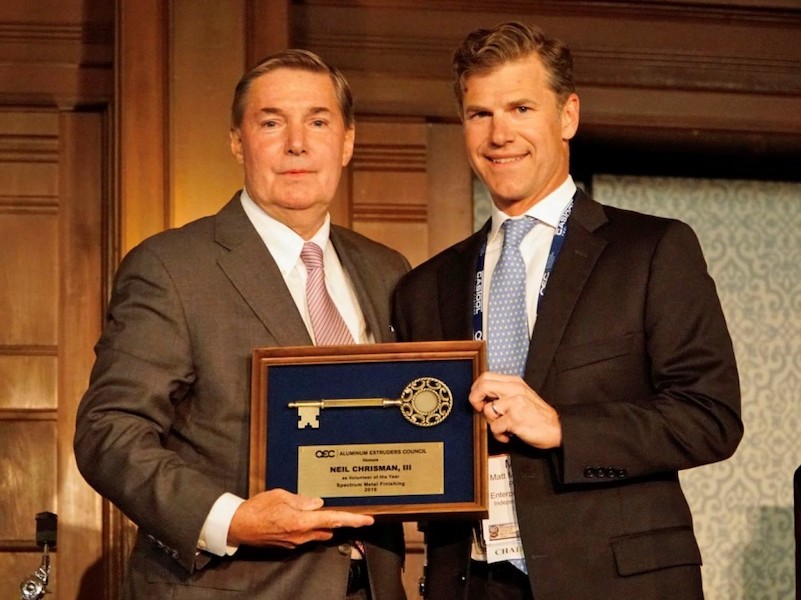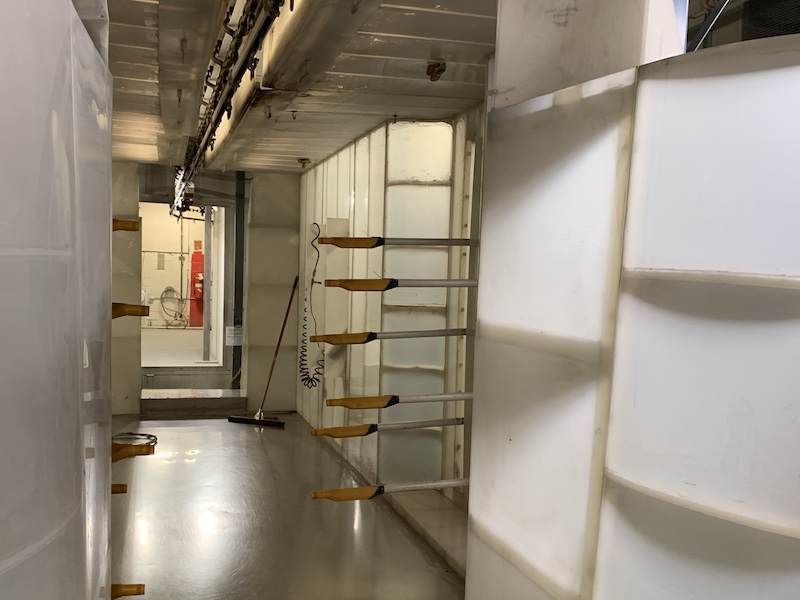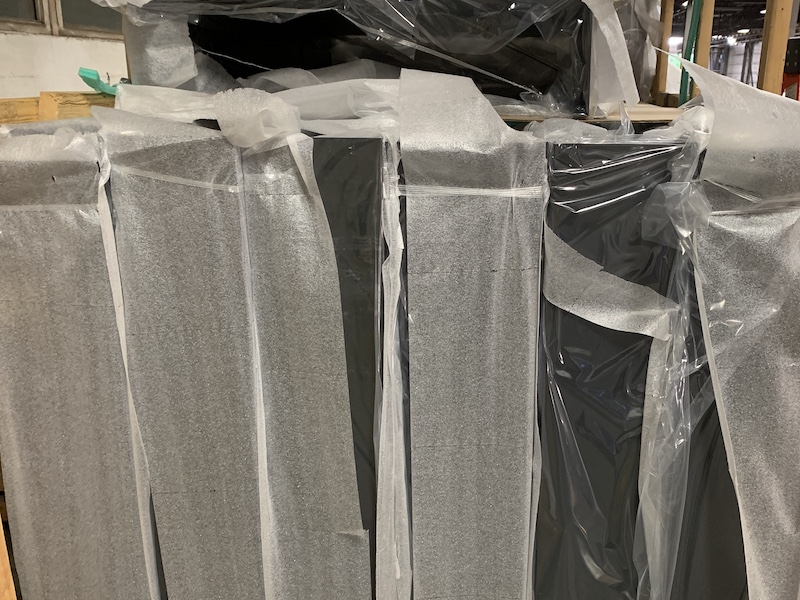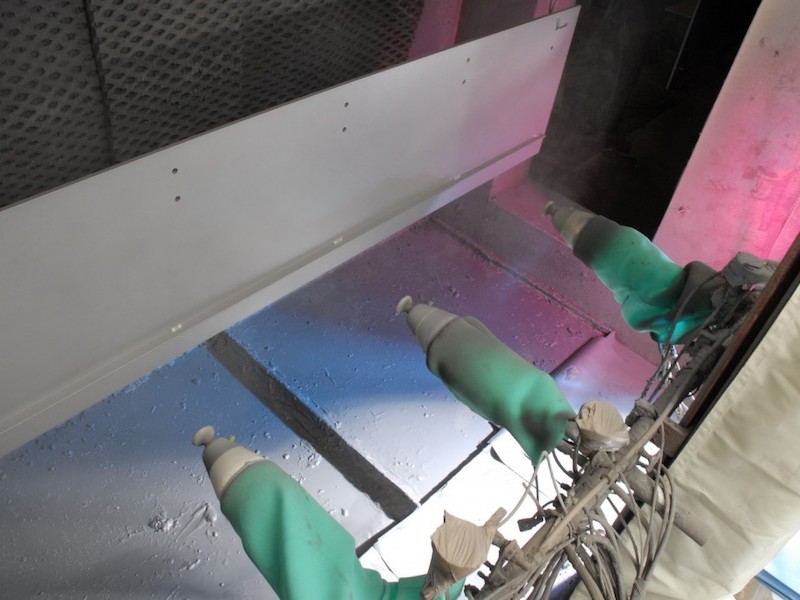When Neil Chrisman left PPG in 1993 to start his own business, he wanted to dream big. It turns out that the owner of Spectrum Metal Finishing didn’t realize just how big his new company would take him.
Located in Youngstown, Ohio, Spectrum has become a specialized applicator in the architectural powder coating market. In one of its most recent projects, the company had a hand in helping build one of the newest skyscrapers in New York City, which also turns out to be one of the first skyscrapers to be finished in powder coating.
Spectrum powder coated a 51-story skyscraper in Hudson Yards in New York, a landmark in the Hudson Yards development, which is the country’s largest-ever private real estate development. The factory-applied nearly 20,000 pounds (9.1 metric tons) of powder coatings to metal components used on the building’s facade.
“Our primary focus over the past 27 years has been on the architectural market,” says Chrisman, who is president of Spectrum while his son, Neil Chrisman IV, is vice president of operations. “The architectural market continues to make up a significant portion of our business.”
Leaving a Corporate Career
 Chrisman spent 18 years at PPG and then decided to branch out with his own company when he purchased Spectrum. He used his corporate experience to modernize the company’s powder coating operation and has seen that pay off handsomely.
Chrisman spent 18 years at PPG and then decided to branch out with his own company when he purchased Spectrum. He used his corporate experience to modernize the company’s powder coating operation and has seen that pay off handsomely.
“Our company has had substantial growth,” he says. “We’ve built very strong relationships over those years, and still service many of our first customers.”
One reason for that growth has been Spectrum’s ability to take on larger architectural projects. They say their facilities and capabilities are not found at any other company within a 500-mile radius, and they have shipped products to customers and job sites throughout the United States, Eastern Canada, the Pacific Rim and the Caribbean.
Spectrum’s horizontal production lines were specifically built to service the commercial construction industry. The shop’s part package measures 33-feet long, 72-inches high and 30-inches deep for both liquid and powder lines
“We compare that to our competitors, whose facilities typically handle only material ranging from 10 feet to 24 feet,” says Jared Ruggieri, who the Chrismans brought on as national sales manager several years ago.
Established Sales Team

“Jared has a well-established track record in sales leadership, client service, and business forecasting,” Chrisman says. “As we focus on continued growth, Jared will work closely with our senior leadership and national sales team to build a cohesive marketing and growth strategy.”
Spectrum Metal Finishing’s 60-employee headquarters in Youngstown is also the birthplace of the aluminum extrusion industry. They are located just one hour from Cleveland or Pittsburgh, which have a large amount of aluminum extruders for the architectural industry.

“Going from a 5-stage to 7-stage pretreatment has been a big improvement,” says Chrisman IV. “We have also made continuous improvements to our packaging department; the most recent was the addition of an expanding foam system to help fill gaps in crating and discourage parts from shifting in transit.”
Focus on Quality and Architectural Market
Spectrum’s top vendor partners are PPG, Sherwin-Williams, AkzoNobel, Tiger Drylac, Axalta and IGP.

Spectrum is heaving involved in the Aluminum Extruders Council (AEC), and the elder Chrisman was presented the Volunteer of the Year award by the AEC in 2018. He became a member of the AEC 1999, and began serving on the Finishing Committee since Spectrum became a member. Chrisman became vice chairman of the committee in 2006, and became team leader in 2013 after the Council reorganized the committee structure. As leader of the Finishing team, he has overseen the development and delivery of three successful Finishing Workshops, and served as a supplier-director on the board of directors from 2013 to 2015.
“I see companies like Spectrum assisting to improve collaboration with architects and building owners,” Chrisman says. “We continue to see success in projects that involve the finisher early on in the color selection process by providing color options and samples, being involved in project mock-ups, and ultimately applying the finish to the final product.”

The firm selected to rehabilitate Pier 17 had four essential demands for the metal coatings supplier. The first was that, due to its location on the East River five miles from the Atlantic Ocean, the coating had to include a long-term warranty covering film integrity, chalk and color fade. The second was that the metal coating must be solvent-free to help the project earn points toward LEED certification for the exterior curtain wall components. The third and fourth requirements were that the coatings applicator had to be certified by both the ISO (International Standards Organization) and the coatings manufacturer.
Coating in a Turnkey Environment

Chrisman says the architect wanted mill-finished aluminum with an industrial look and a clear topcoat.
“They could never really achieve that look and still get the adhesion and warranty they wanted, so PPG came up with a silver color that looks like a weathered mill aluminum,” he says. “I can’t tell you how many different submittals they did, but they eventually got the look the architect wanted.”
Another unusual aspect of the Pier 17 project is the application of PPG Duranar coatings, which are designed primarily for exterior metals, on more than 500 interior wall panels. They are visible through two stacked rows of 20-foot-tall lightboxes that compose much of the building façade.

During the day, the sunlight coming through the lightboxes strikes the dot pattern and diffuses. At night, the dot pattern helps disperse the spray of colors projected onto the building, giving the façade a bright, carnival-like appearance.
“Everything looks beautiful and there is no risk of the panels inside the glass chalking or fading from UV exposure because they are finished with Duranar [coatings],” Chrisman says. “The metal panels also eliminated the need for the expensive glass frits that were originally specified for the job, which was a significant cost saving.”
Chrisman says that he sees architectural aluminum growing as an alternative to many facades substrates, and that several recent projects have opted for aluminum in creating the look of red terracotta, white glazed terracotta, and corten steel. Looking back, he says buying his own company has been a wonderful decision.
“Leaving a corporate career after 18 years to buy Spectrum in 1993 was a difficult decision,” he says. “It also created the opportunity to leave a legacy for my son.”







































